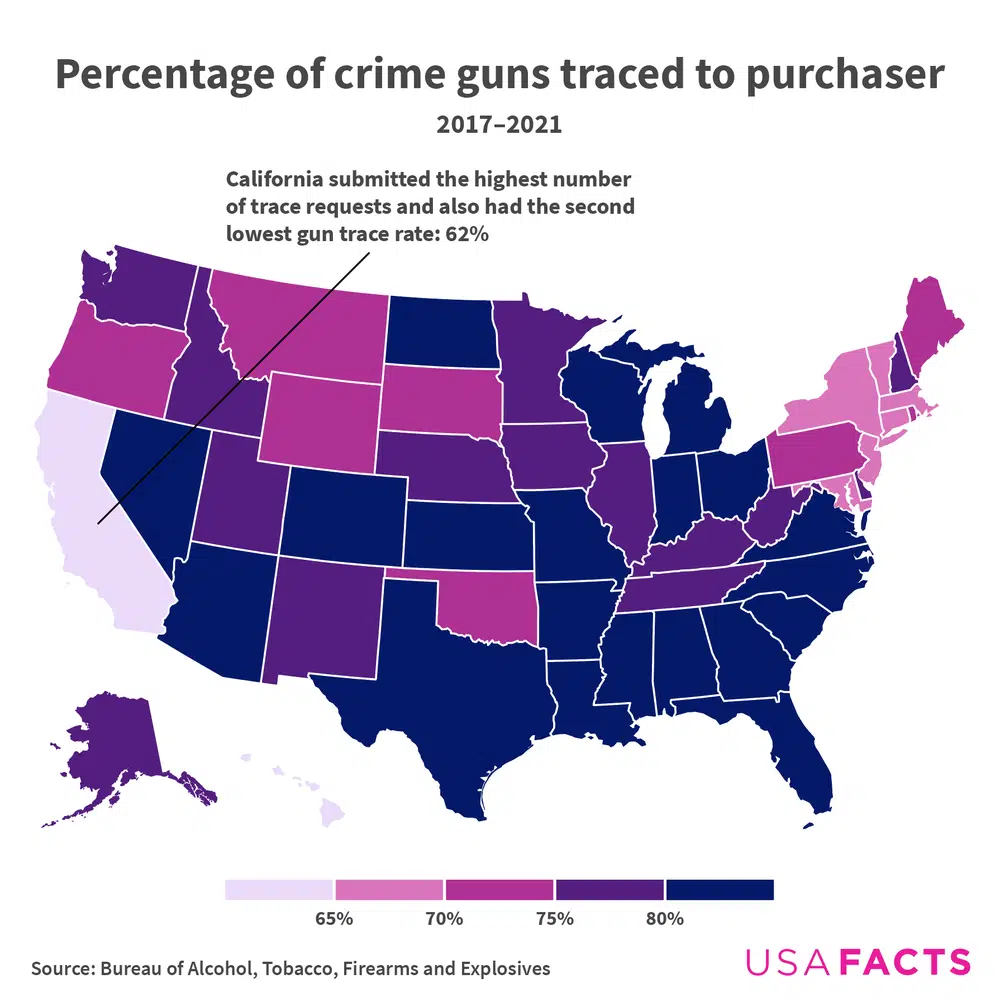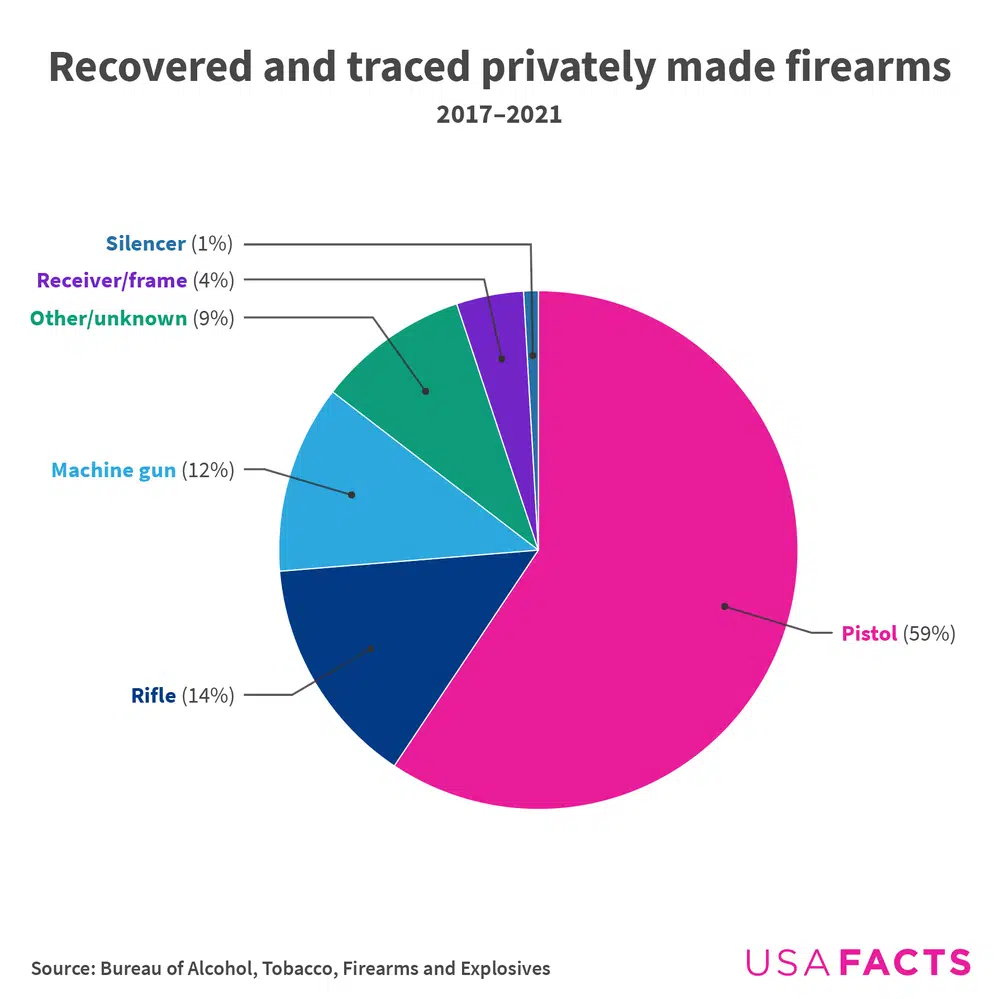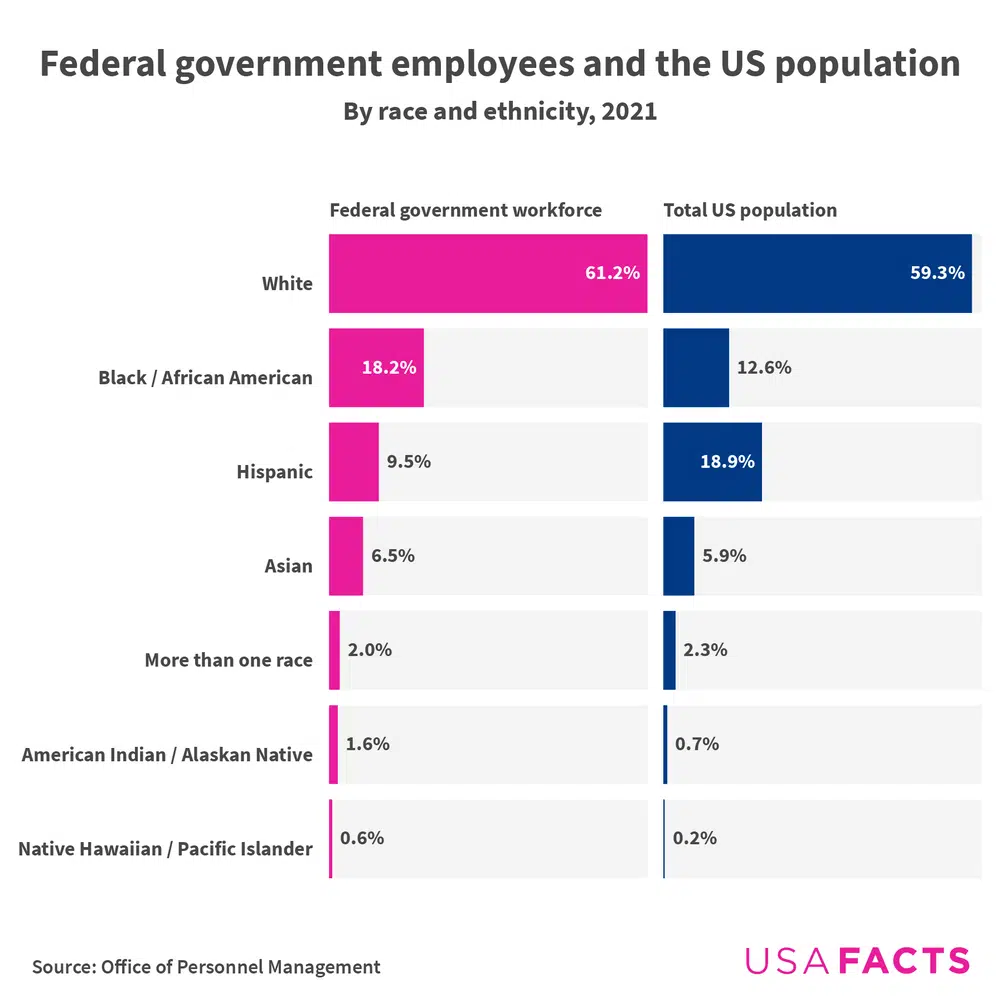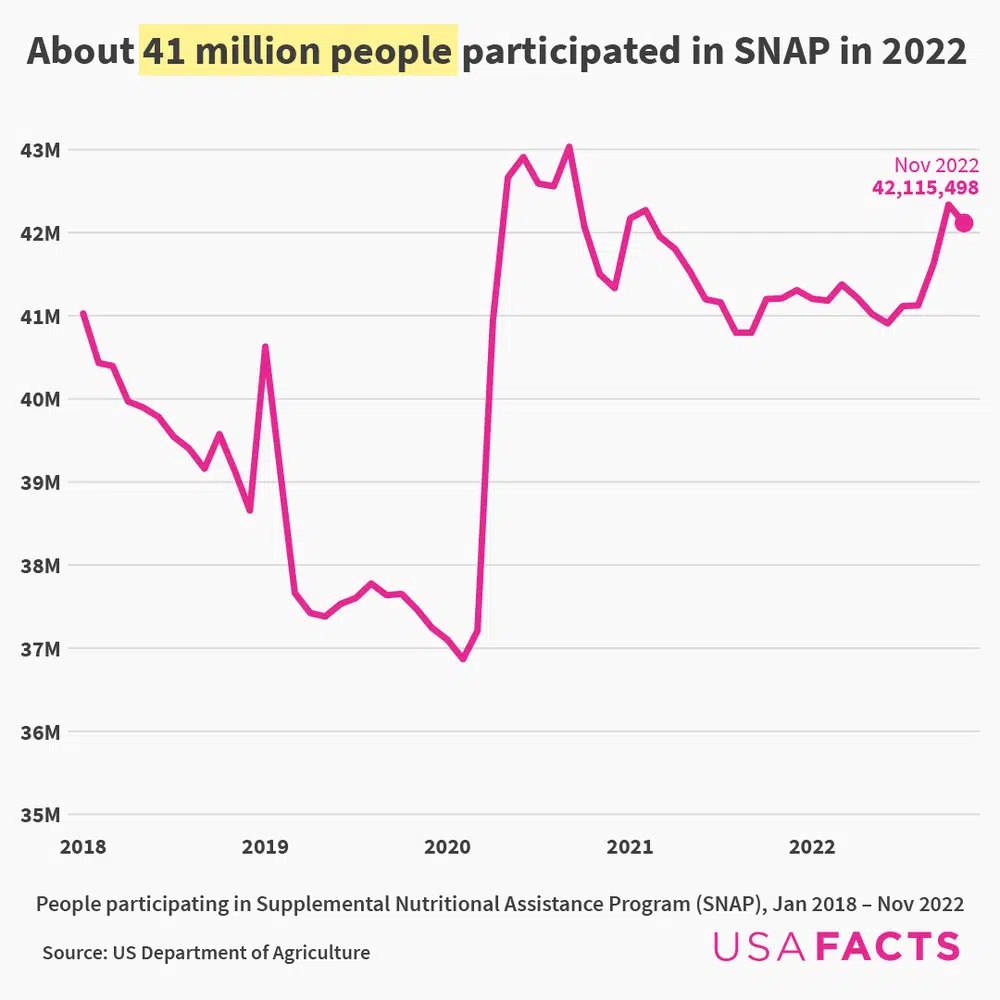Economy
How many teens are in the labor force?

Was a gun that was used in a crime bought legally? Who bought it — and where?
A Bureau of Alcohol, Tobacco, Firearms and Explosives (ATF) report issued just last month can help answer these questions. This report — the first in over two decades — uses 2017–2021 National Tracing Center data to shed light on guns found at crime scenes, ghost guns, and more.


Read on for more about state successes in tracking crime guns. USAFacts is analyzing the ATF report for even more insight. Stay tuned to this newsletter and USAFacts.org for more very soon.
More than 1.5 million civilians work in the federal government. A new report on race, gender, and military service of these employees shows that some races are overrepresented — meaning a disproportionately large number in the workforce compared to their portion of the overall population — while others are underrepresented.

See more charts on the federal workforce here.
Women coach the two teams set for the NCAA Women’s Final Four (the other two teams will be determined later today). Women are 56.9% of head coaches for NCAA women’s basketball teams.
Think you know the latest data at USAFacts? Test yourself with the weekly fact quiz.

The Supplemental Nutritional Assistance Program (SNAP), also known as food stamps, is the government’s largest program for nutrition benefits. The government added extra SNAP benefits during the pandemic to help families facing food insecurity (the limited or unknown availability of nutritional and safe foods for a household to meet basic needs). These emergency allotments, which affected 41 million Americans on SNAP benefits, officially ended on March 1.